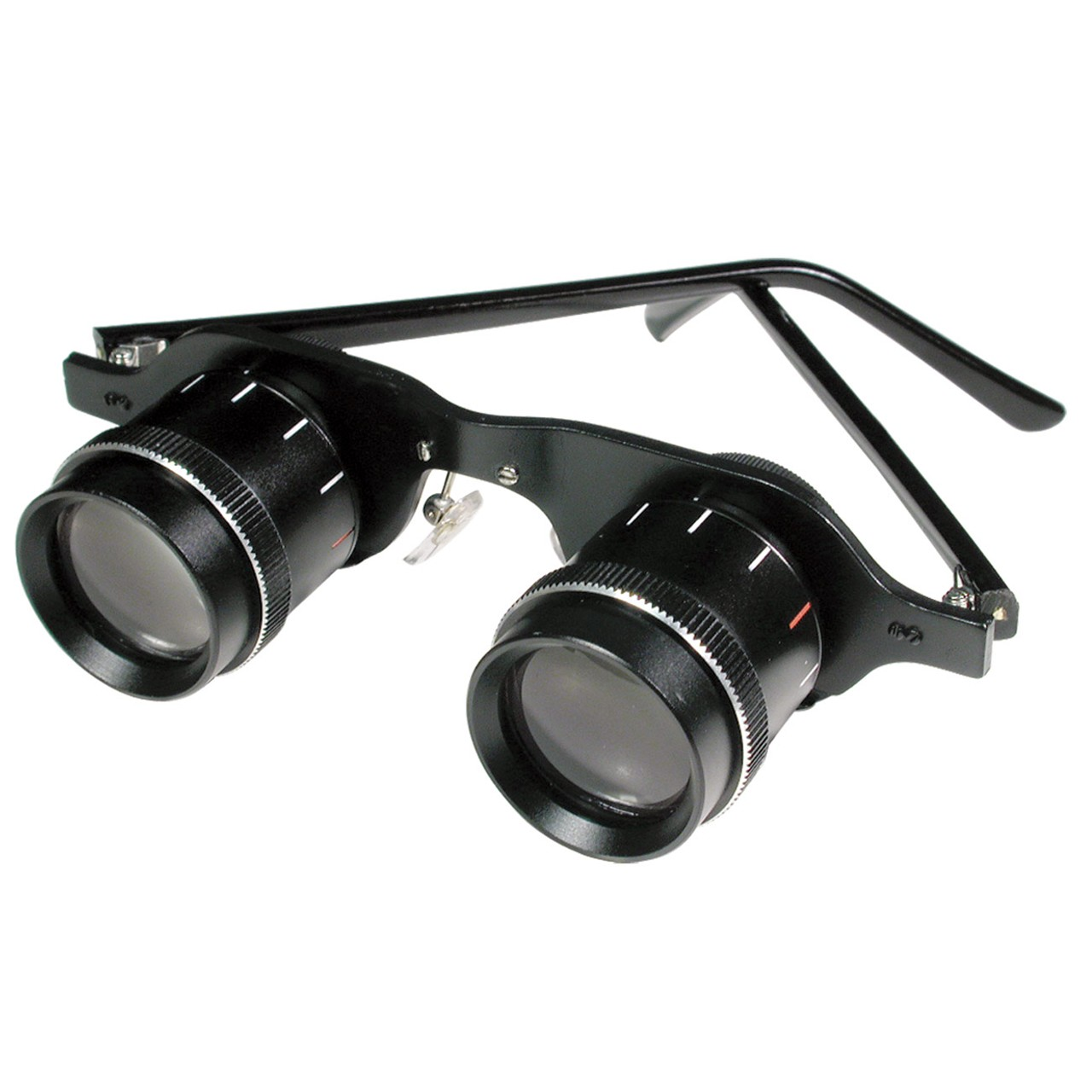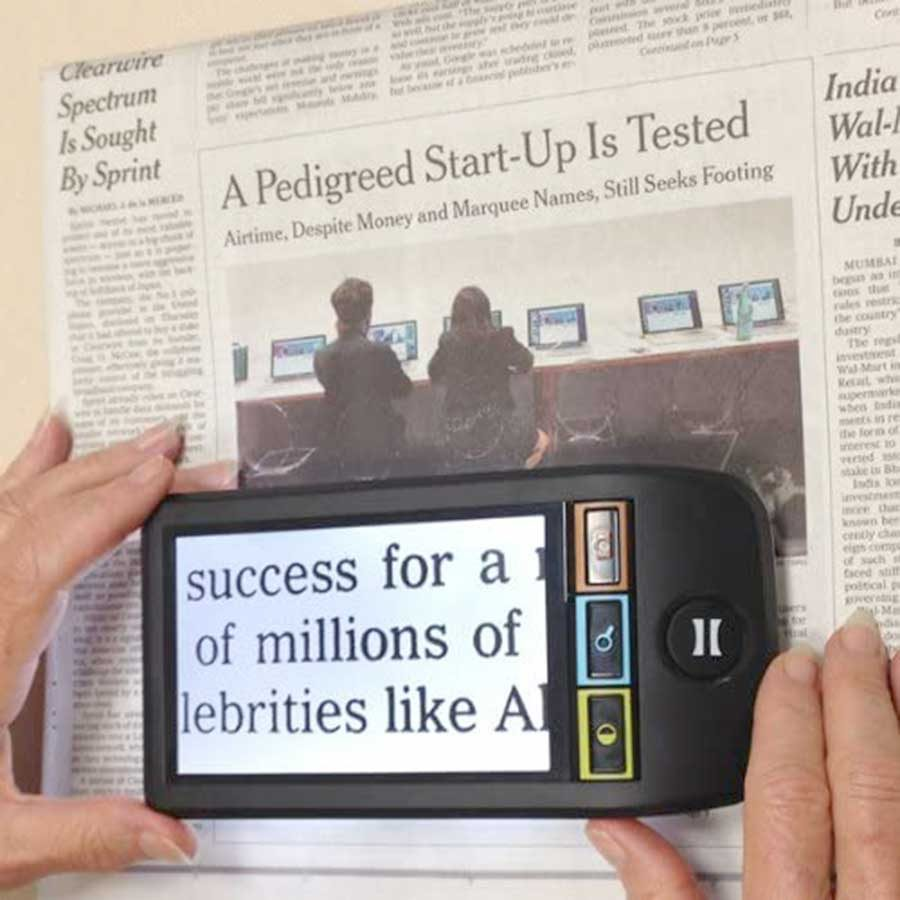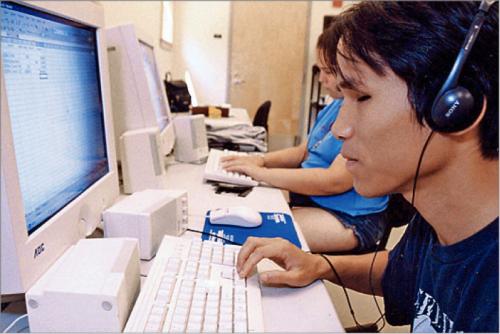Visual impairment affects a significant number of people worldwide, with varying degrees of severity. Blindness and low vision can significantly impact an individual’s quality of life, making everyday activities, such as reading, writing, and navigation, challenging. Fortunately, technological advancements have led to the development of optical low vision aids (LVAs) that enable individuals with visual impairments to perform daily tasks independently. Optical low vision aids are essential tools that enable individuals with visual impairments to lead independent and fulfilling lives. These devices come in various forms and can be used by individuals with different levels of visual impairment. Although these aids cannot restore full vision, they can significantly improve the user’s visual functioning and quality of life. These devices can help people to see better, enabling them to perform daily activities with more ease and independence.
Introduction:
Visual impairment or blindness is a condition that affects a large number of people worldwide. Blindness is defined as the complete loss of sight, while visual impairment refers to any degree of vision loss that cannot be corrected with glasses or contact lenses. There are many causes of blindness and visual impairment, including genetic disorders, eye diseases, and injuries. In recent years, there has been a significant advancement in technology, which has led to the development of optical low vision aids to help people with blindness and visual impairments.
Optical LVAs refer to any device that utilizes lenses to aid in vision. These devices come in various forms and can be used by individuals with different levels of visual impairment. They can be classified into two main categories: optical aids for the blind and optical aids for the visually impaired.
Optical aids for the blind are designed for individuals with little or no residual vision. They include devices such as the white cane, which provides tactile feedback to help individuals navigate their environment. Another example is the electronic travel aid (ETA), which uses ultrasonic or infrared technology to detect obstacles in the user’s path and emit audible signals to indicate their proximity.
Optical aids for the visually impaired, on the other hand, are designed for individuals with some remaining vision. These devices help to magnify images or increase contrast, making it easier for the user to see. Examples include magnifiers, telescopes, and filters. LVAs can be further classified into two subcategories: near vision aids and distance vision aids.
Near vision aids are used for tasks that require close-up viewing, such as reading, writing, or looking at photographs. These aids include hand-held magnifiers, stand magnifiers, and electronic magnifiers. Hand-held magnifiers are the most common type of near vision aids and come in different sizes and magnification strengths. Stand magnifiers are designed for prolonged reading and writing tasks and are held steady by a stand. Electronic magnifiers use a camera and a screen to magnify images, and some models can even adjust the contrast and color settings.
Distance vision aids are used for tasks that require viewing objects from a distance, such as watching television, attending sporting events, or birdwatching. These aids include telescopes and filters. Telescopes come in different sizes and magnification strengths and can be hand-held or mounted on a stand. Filters, such as colored lenses or glare-reducing filters, are used to enhance contrast and reduce glare.
Magnifying Glasses

Magnifying glasses are a popular type of optical low vision aid that can be used by people with low vision. They are simple to use and come in different magnification strengths, allowing users to adjust the level of magnification according to their needs. Magnifying glasses can be used to read books, newspapers, and other printed materials, as well as to view small objects such as coins and stamps.
Telescopes

Telescopes are another type of low vision aid that can be used to help people with blindness or visual impairments. They work by magnifying distant objects, making them easier to see. Telescopes can be handheld or mounted on a stand, and they come in different magnification strengths. Some telescopes also have a built-in camera that allows users to take pictures of distant objects.
Video Magnifiers

Video magnifiers are electronic devices that use a camera to magnify and display text or images on a screen. They are similar to magnifying glasses, but they offer more flexibility and options. Users can adjust the magnification level, contrast, and color settings to suit their needs. Video magnifiers can be used to read books, newspapers, and other printed materials, as well as to view pictures and other visual content.
Screen Readers

Screen readers are software programs that read text aloud to users. They are designed to help people with blindness or visual impairments to use computers and access digital content. Screen readers work by using a speech synthesizer to read aloud the text that appears on the computer screen. They also provide keyboard shortcuts and other navigation tools to help users interact with the computer.
Recommended Articles:
Bipolar Junction Transistor: Definition, Construction, Operation, and Types
Black Body Radiation: Wien’s Displacement Law
Black Hole: Formation, Types, and Capacity
Blind Visually Impaired Braille
Blind Visually Impaired Non Optical Low Aids Vision
Some examples of optical aids for low vision include: Telescopes: Bioptic Telescopic Glasses, Full-diameter Telescopes, Telemicroscope Glasses. Low vision devices work on the principle of optical magnification and provide an enlarged image of the object. Reading glasses help the user focus on text or other objects while holding the object close to the user's eyes. Reading glasses allow the widest field of view for reading compared to other aids. Unfortunately, low vision is usually permanent. Eyeglasses, medicine, and surgery can't usually cure low vision — but sometimes they can improve vision, help you do everyday activities more easily, or keep your vision from getting worse. They include handheld monoculars, clip-on monoculars, spectacle-mounted telescopes, and contact lens systems. These devices are used for distance tasks beyond arm's reach, such as reading what is on the whiteboard in a classroom, spotting street signs, and watching television. Blind Visually Impaired Optical Low Vision Aids FAQs
Which device is very useful for person with low vision?
What are the principles of low vision aids?
Which low vision device provides the widest field of view?
Can low vision be corrected?
What are low vision devices for distance?
